Comparison of Greenhouse Energy Requirements for Rose Cultivation in Europe and North Africa
Abstract
1. Introduction
2. Materials and Methods
2.1. Meteorological Data
2.2. The Greenhouse Energy Balance
2.3. Model Test
2.4. Analysis of Energy Requirements for Heating
- -
- the hourly greenhouse energy balance model was applied to the temperature time series of the 56 sites for the period 1973–2019;
- -
- the analysis of the heating requirements of the 56 sites was presented and discussed, focusing on the heating requirements for the 30 years 1990–2019, very close to the 1991–2020 period adopted by the WMO;
- -
- a comparison with the former phase (1973–1989) was carried out to show the changes in terms of energy requirements for climatization;
- -
- an analysis of the cost of fuel for the period 1990–2019 concerning to the site of Vittoria (Italy).
3. Results
3.1. Model Validation on a Rose Production Farm Located in Sicily
3.2. European Energy Requirements for Greenhouse Climatization
3.3. Highest Energy Requirements Recorded in Different Locations
3.4. Comparison with Past Energy Requirements
3.5. Fuel Requirements for the Greenhouse Climatization
4. Discussion
5. Conclusions
Supplementary Materials
Author Contributions
Acknowledgments
Conflicts of Interest
References
- Yue, C.; Behe, B.K. Consumer Color Preferences for Single-stem Cut Flowers on Calendar Holidays and Noncalendar Occasions. HortScience 2010, 45, 78–82. [Google Scholar] [CrossRef]
- Nazari, F.; Khosh-Khui, M.; Salehi, H. Growth and flower quality of four Rosa hybrida L. cultivars in response to propagation by stenting or cutting in soilless culture. Sci. Hortic. 2009, 119, 302–305. [Google Scholar] [CrossRef]
- Shin, H.; Lieth, J.; Kim, S. Effects of temperature on leaf area and flower size in rose. Acta Hortic. 2001, 547, 185–191. [Google Scholar] [CrossRef]
- AIPH; Union Fleurs. International Statistics Flowers and Plants 2018; International Association of Horticultural Producers Horticulture House: Chilton, UK, 2018; Volume 66, p. 204. [Google Scholar]
- Lieth, J.; Pasian, C.C. A simulation model for the growth and development of flowering rose shoots. Sci. Hortic. 1991, 46, 109–128. [Google Scholar] [CrossRef]
- Kim, S.; Lieth, J.H. A Coupled Model of Photosynthesis, Stomatal Conductance and Transpiration for a Rose Leaf (Rosa hybrida L.). Ann. Bot. 2003, 91, 771–781. [Google Scholar] [CrossRef] [PubMed]
- Massa, D.; Mattson, N.S.; Lieth, H. An empirical model to simulate sodium absorption in roses growing in a hydroponic system. Sci. Hortic. 2008, 118, 228–235. [Google Scholar] [CrossRef]
- FAO Good Agricultural Practices for Greenhouse Vegetable Crops. FAO Plant Production and Protection Paper 217; Food and Agriculture Organization of the United Nations: Rome, Italy, 2013. [Google Scholar]
- Belwal, R.; Chala, M. Catalysts and barriers to cut flower export. Int. J. Emerg. Mark. 2008, 3, 216–235. [Google Scholar] [CrossRef]
- Steen, M. A world of Flowers: Dutch flower auctions and the market for cut flowers. J. Appl. Hortic. 2010, 12, 113–121. [Google Scholar]
- Franze, J.; Ciroth, A. A comparison of cut roses from Ecuador and the Netherlands. Int. J. Life Cycle Assess. 2011, 16, 366–379. [Google Scholar] [CrossRef]
- De Pascale, S.; Maggio, A. Sustainable protected cultivation at a mediterranean climate. Perspectives and challenges. Acta Hortic. 2005, 691, 29–42. [Google Scholar] [CrossRef]
- NOAA GSOD Dataset. Available online: http://www1.ncdc.noaa.gov/pub/data/gsod/ (accessed on 15 January 2020).
- Mariani, L.; Cola, G.; Bulgari, R.; Ferrante, A.; Martinetti, L. Space and time variability of heating requirements for greenhouse tomato production in the Euro-Mediterranean area. Sci. Total. Environ. 2016, 562, 834–844. [Google Scholar] [CrossRef] [PubMed]
- Reicosky, D.; Winkelman, L.; Baker, J.; Baker, D. Accuracy of hourly air temperatures calculated from daily minima and maxima. Agric. For. Meteorol. 1989, 46, 193–209. [Google Scholar] [CrossRef]
- Cola, G.; Failla, O.; Mariani, L. BerryTone—A simulation model for the daily course of grape berry temperature. Agric. For. Meteorol. 2009, 149, 1215–1228. [Google Scholar] [CrossRef]
- Allen, R.G.; Pereira, L.S.; Raes, D.; Smith, M. Crop Evapotranspiration—Guidelines for Computing Crop Water Requirements—FAO Irrigation and Drainage; FAO—Food and Agriculture Organization of the United Nations: Rome, Italy, 1998; Paper 56. [Google Scholar]
- Williams, W.A.; Loomis, R.S.; Carter, M.B. Computing Hourly Values of Diffuse and Direct Sunlight 1. Crop. Sci. 1974, 14, 492–493. [Google Scholar] [CrossRef]
- Arguez, A.; Vose, R.S. The Definition of the Standard WMO Climate Normal: The Key to Deriving Alternative Climate Normals. Bull. Am. Meteorol. Soc. 2011, 92, 699–704. [Google Scholar] [CrossRef]
- World Meteorological Organization (WMO). Guidelines on the Calculation of Climate Normals; WMO-No. 1203; WMO: Geneva, Switzerland, 2017; p. 18. Available online: https://library.wmo.int/doc_num.php?explnum_id=4166 (accessed on 15 January 2020).
- Dieleman, J.; Meinen, E.; Dueck, T. Effects of temperature integration on growth and development of roses. Acta Hortic. 2005, 691, 51–58. [Google Scholar] [CrossRef]
- Ushio, A.; Mae, T.; Makino, A. Effects of temperature on photosynthesis and plant growth in the assimilation shoots of a rose. Soil Sci. Plant Nutr. 2008, 54, 253–258. [Google Scholar] [CrossRef]
- Mc Intosh, D.H.; Thom, A.S. Essentials of Meteorology; Wikeham Publications: London, UK, 1972; p. 239. [Google Scholar]
- Papadopoulos, A.P.; Hao, X. Effects of three greenhouse cover materials on tomato growth, productivity, and energy use. Sci. Hortic. 1997, 70, 165–178. [Google Scholar] [CrossRef]
- Börjesson, P.; Mattiasson, B. Biogas as a resource-efficient vehicle fuel. Trends Biotechnol. 2008, 26, 7–13. [Google Scholar] [CrossRef]
- Kittas, C.; Karamanis, M.; Katsoulas, N. Air temperature regime in a forced ventilated greenhouse with rose crop. Energy Build. 2005, 37, 807–812. [Google Scholar] [CrossRef]
- Van Beveren, P.; Bontsema, J.; Van Straten, G.; Van Henten, E.J. Minimal heating and cooling in a modern rose greenhouse. Appl. Energy 2015, 137, 97–109. [Google Scholar] [CrossRef]
- Buwalda, F.; Rijsdijk, A.; Vogelezang, J.; Hattendorf, A.; Batta, L. An energy efficient heating strategy for cut rose production based on crop tolerance to temperature fluctuations. Acta Hortic. 1999, 507, 117–126. [Google Scholar] [CrossRef]
- Dayan, E.; Presnov, E.; Fuchs, M. Prediction and calculation of morphological characteristics and distribution of assimilates in the ROSGRO model. Math. Comput. Simul. 2004, 65, 101–116. [Google Scholar] [CrossRef]
- Hopper, D.A.; Hammer, P.A.; Wilson, J.R. A Simulation Model of Rosa hybrida Growth Response to Constant Irradiance and Day and Night Temperatures. J. Am. Soc. Hortic. Sci. 1994, 119, 903–914. [Google Scholar] [CrossRef]
- Berg, G.V.D. Rose factories, fiction or future? Acta Hortic. 1996, 424, 405–412. [Google Scholar] [CrossRef]
- Msogoya, T.; Maerere, A. The Flower Industry in Tanzania: Production Performance and Costs. J. Agron. 2006, 5, 478–481. [Google Scholar]
- Zhou, J.-B.; Chen, Z.-J.; Liu, X.-J.A.; Zhai, B.-N.; Powlson, D.S. Nitrate accumulation in soil profiles under seasonally open ‘sunlight greenhouses’ in northwest China and potential for leaching loss during summer fallow. Soil Use Manag. 2010, 26, 332–339. [Google Scholar] [CrossRef]
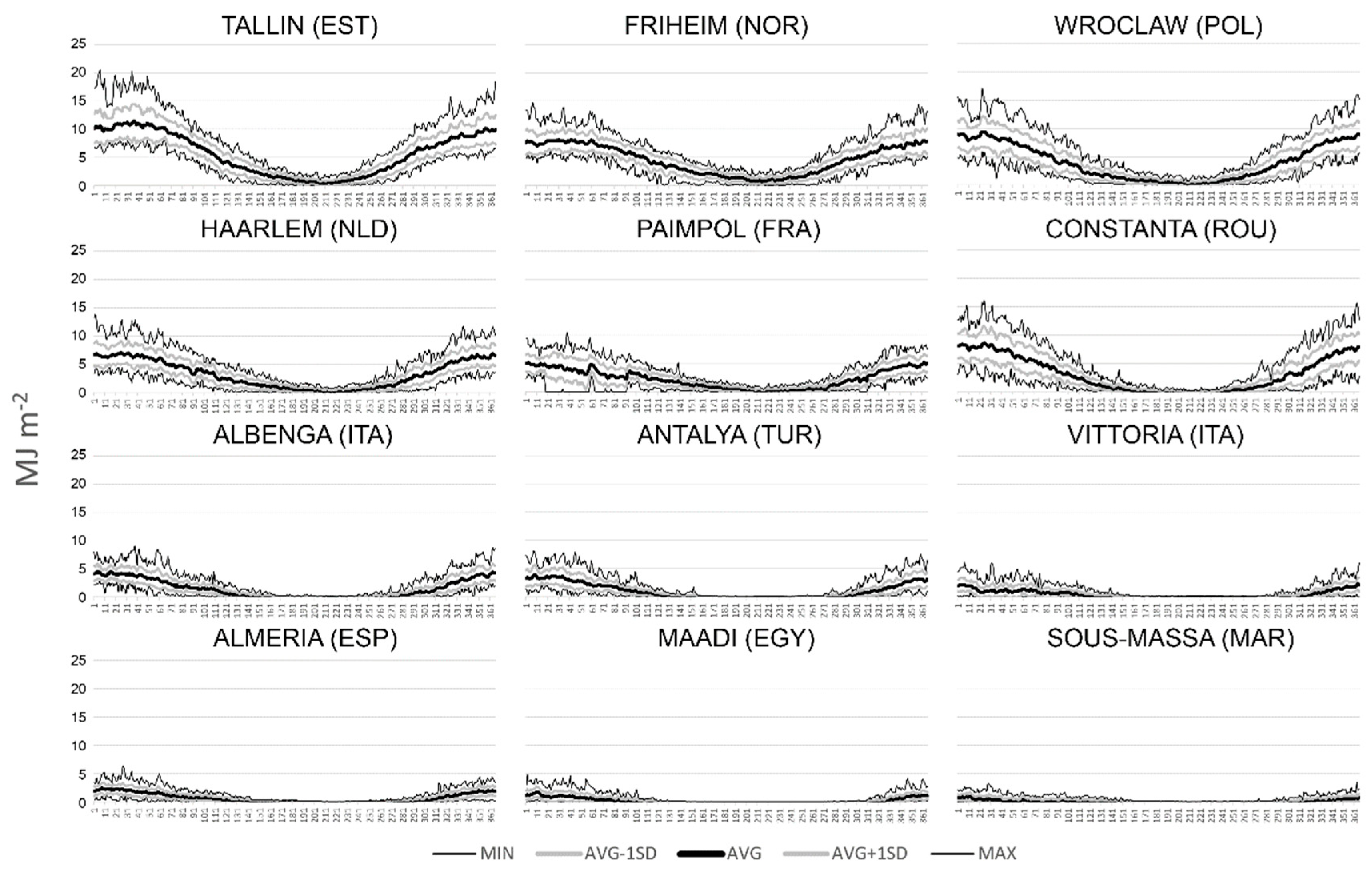
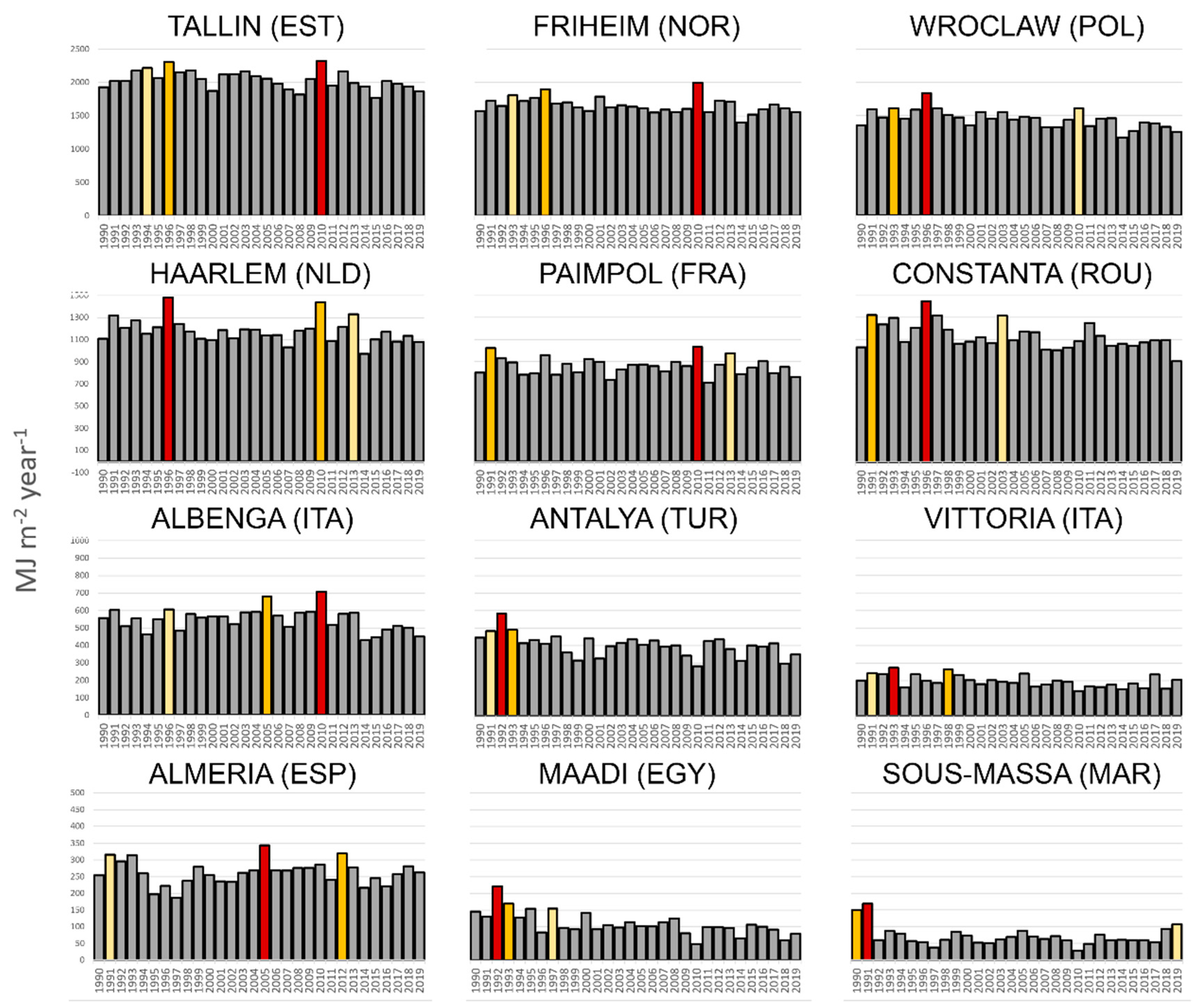
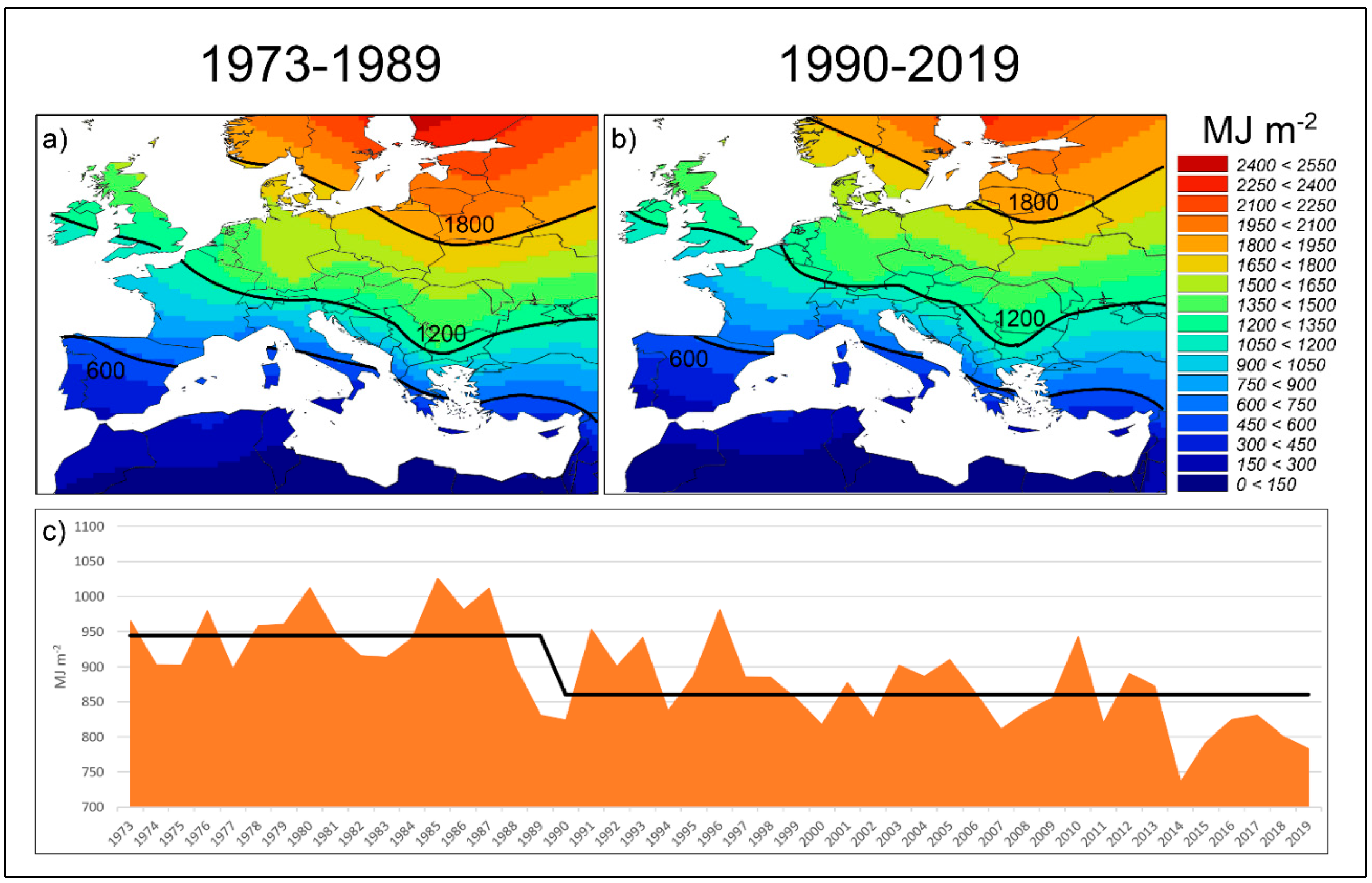
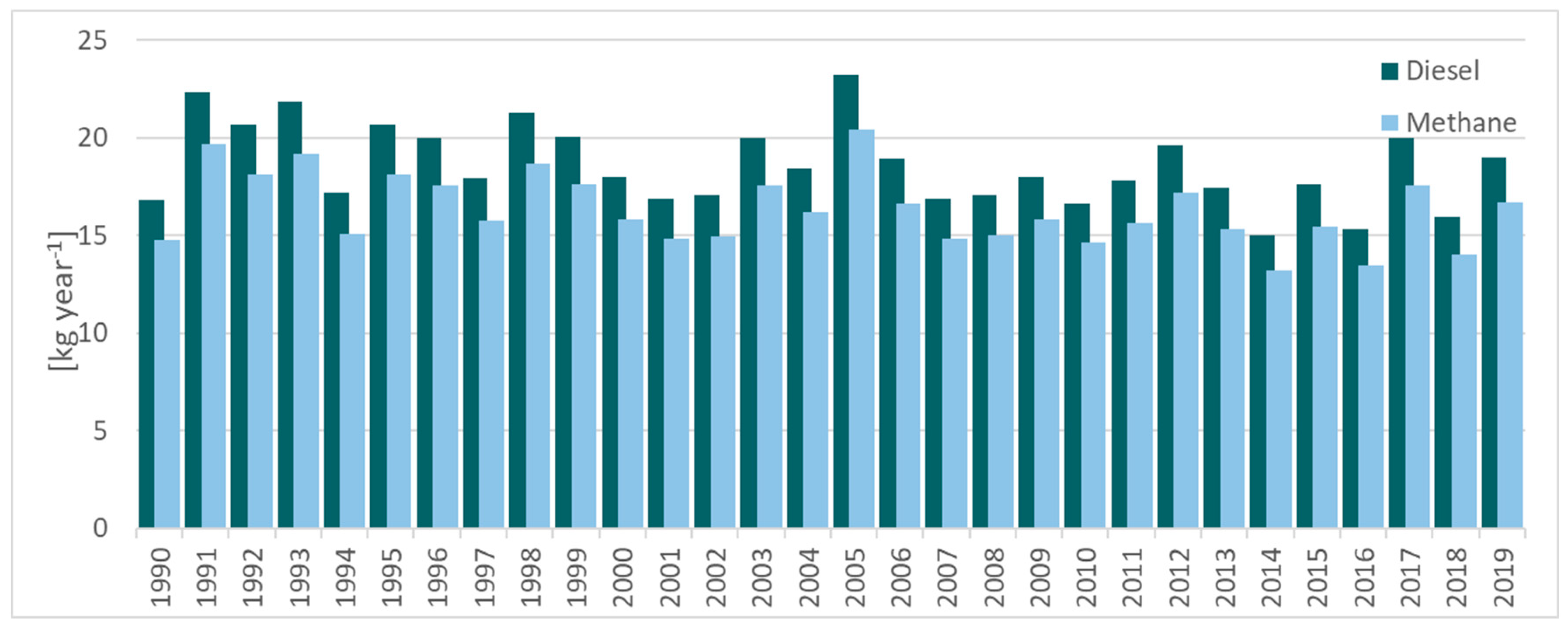
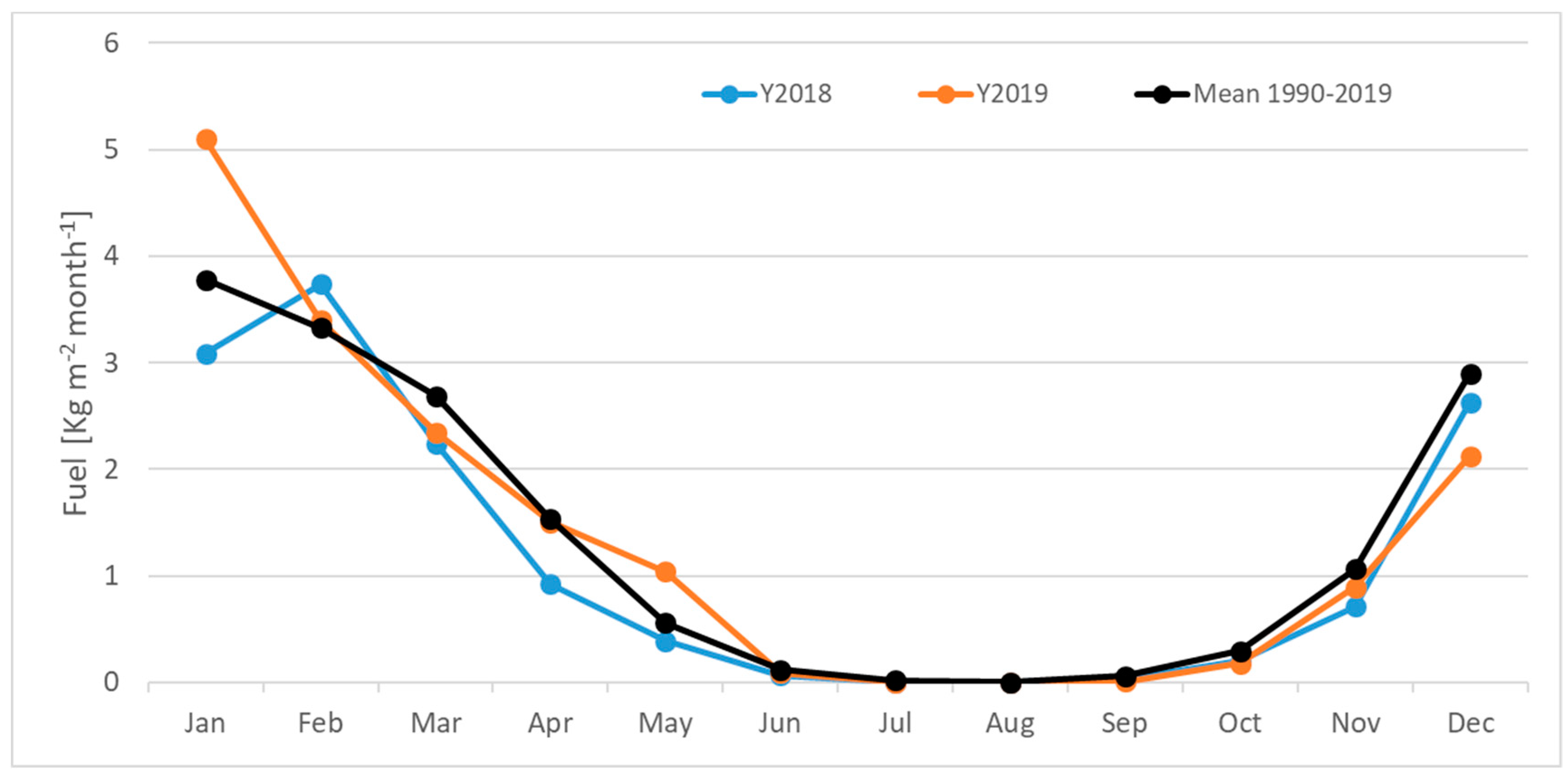
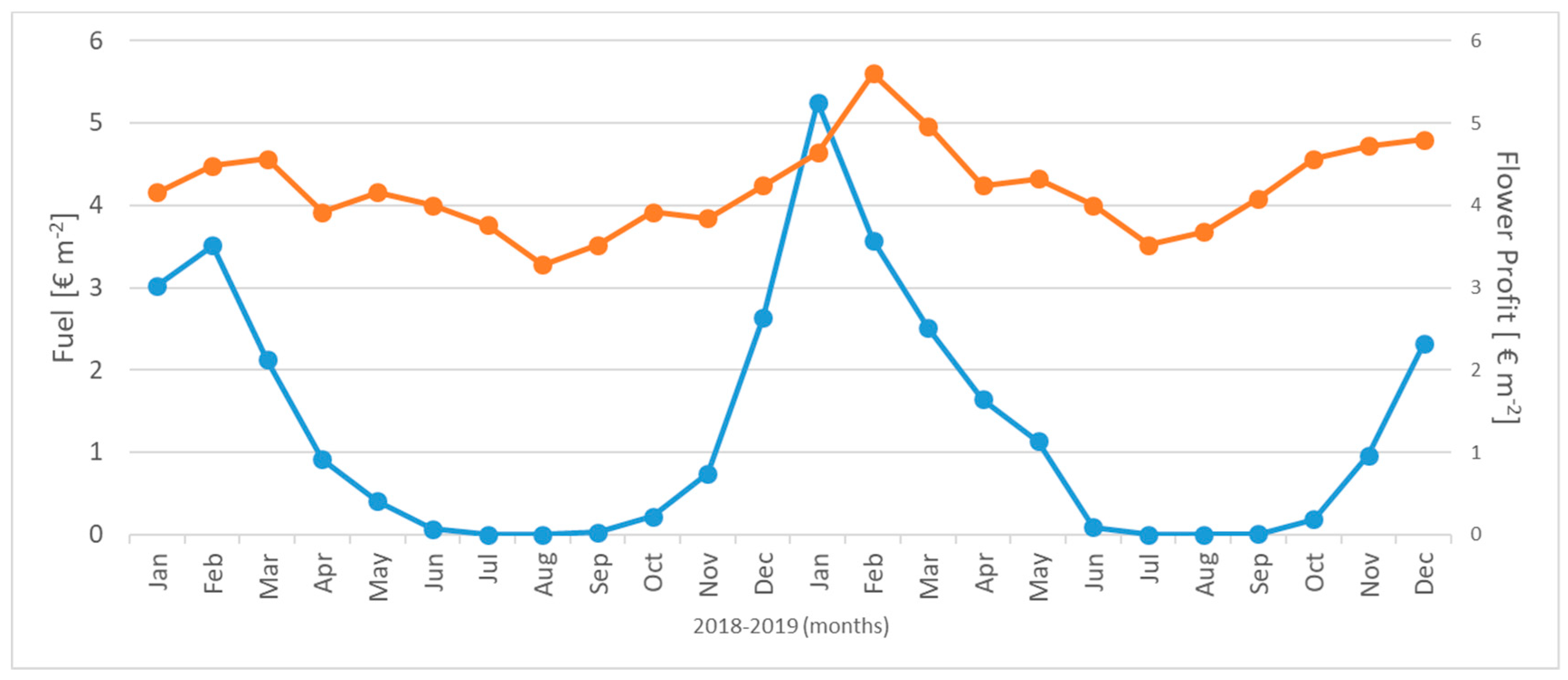
| Countries | Areas (ha) | Year | ||
|---|---|---|---|---|
| Total | In the Open | Under Protection | ||
| Belgium | 10 | 10 | 2012 | |
| Finland | 4.5 | 4.5 | 2012 | |
| Germany | 323 | 224 | 99 | 2017 |
| Greece | 90 | 1995 | ||
| Hungary | 25 | 2006 | ||
| Israel | 214 | 2004 | ||
| Italy | 1221 | 2005 | ||
| Morocco | 82 | 73 | 9 | 2007–2008 |
| Netherland | 300 | 300 | 2018 | |
| Poland | 185 | 185 | 2016 | |
| Spain | 127 | 12 | 115 | 2016 |
| Turkey | 210 | 210 | 2017 | |
| TOTAL | 2791.5 | 309 | 932.5 | |
| Month | Methane [m3] | Energy [MJ m−2] | % of Total |
|---|---|---|---|
| November | 4380 | 21.5 | 4.96 |
| December | 15,520 | 72.9 | 17.57 |
| January | 40,383 | 193.1 | 45.71 |
| February | 16,843 | 80.6 | 19.06 |
| March | 11,229 | 53.7 | 12.71 |
© 2020 by the authors. Licensee MDPI, Basel, Switzerland. This article is an open access article distributed under the terms and conditions of the Creative Commons Attribution (CC BY) license (http://creativecommons.org/licenses/by/4.0/).
Share and Cite
Cola, G.; Mariani, L.; Toscano, S.; Romano, D.; Ferrante, A. Comparison of Greenhouse Energy Requirements for Rose Cultivation in Europe and North Africa. Agronomy 2020, 10, 422. https://doi.org/10.3390/agronomy10030422
Cola G, Mariani L, Toscano S, Romano D, Ferrante A. Comparison of Greenhouse Energy Requirements for Rose Cultivation in Europe and North Africa. Agronomy. 2020; 10(3):422. https://doi.org/10.3390/agronomy10030422
Chicago/Turabian StyleCola, Gabriele, Luigi Mariani, Stefania Toscano, Daniela Romano, and Antonio Ferrante. 2020. "Comparison of Greenhouse Energy Requirements for Rose Cultivation in Europe and North Africa" Agronomy 10, no. 3: 422. https://doi.org/10.3390/agronomy10030422
APA StyleCola, G., Mariani, L., Toscano, S., Romano, D., & Ferrante, A. (2020). Comparison of Greenhouse Energy Requirements for Rose Cultivation in Europe and North Africa. Agronomy, 10(3), 422. https://doi.org/10.3390/agronomy10030422








